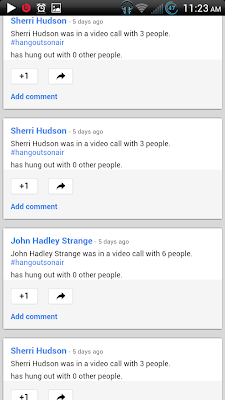Introduction
When EDM310 began this summer I was given my first blog post assignment. In that assignment, I was asked to use my judgement to talk about my ideal classroom. I want to teach eleventh or twelfth grade English, so the answers to the questions I was asked seemed easy at first. What tools will I use? What should my students be able to do? What will be my primary teaching method? Last but not the least, what role should my students play? Before I answered each question, I carefully considered the kind of education high school students might want.
Tools
When I was first asked about what tools I'd use I thought about grammar books and literature. The only reason why I didn't say pen and paper is because I figured that everyone knew that was a necessity. Now I know tools don't have to be so basic and unappealing, and I would change that about my first blog. To speak figuratively, tools can be anything from using technology for creativity or practicing 21st century skills with a thirst for learning.
I'll be more specific about tools in one moment.
What should my students be able to do?
In the first post I stated that I wanted my students to be able to think critically for problem solving. Now, I think I was on the right page, but there is actually more to it than I thought. I don't want my students to just only think critically. I want them to be confident to use technology and collaborate like EDM310 has taught me. I also wanted them to be able to speak in front of their peers, but why didn't I suggest in front of world? I want them to be comfortable with standing up and communicating with society. Everyone has a voice for a reason.
What will be my primary method for teaching now?
Actually...my primary way of teaching isn't going to change. I said that I wanted to ask a question and make them figure out the answer. I really liked my idea and truly believe this class made sense of the ideas had before entering this class. That is the one thing I wouldn't change about that blog post. It's always satisfying to obtain the answer to something you desired to know. That's the core of Project Based learning--an opened-ended question.
What roles will my students play?
I basically wanted my students to be responsible, well-behaved, and professional. I still stand by that too. After all, they are young adults. However, I could've been more specific. I should've said that they need to be responsible for their learning. For example, they can participate in rubric designing. I used to think that students might cheat their way through the class if they designed their rubric, but I was enlightened. If I guide them through the designing process, by setting boundaries, I can show them their potential. They might discover that they can do more than they expected.
Now to be more specific about things I would change
I. Tools
- Google Drive can be used for collaboration and editing individually on the same document. This is good for short collaborative assignments.
- Youtube can be used for watching reenactments of literature.
- Evernote is great for taking notes about a research paper or a creative writing assignment.
- Prezi will attract students attention during short lectures--an interesting way to present common mistakes.
- Symbaloo is good for introducing the students to developing their own learning network.
- Blogger can be used for networking and communication.
- iCurio and Son of Citation is good for researching and citing the found research.
II. Methods
- Student-centered discussions for learning from peers
- Pose quality questions
- Critical thinking assignments
- An nontraditional set-up for desk arrangements. This means the desk in the classroom won't be single file rows. It can look like a curved conference session.























